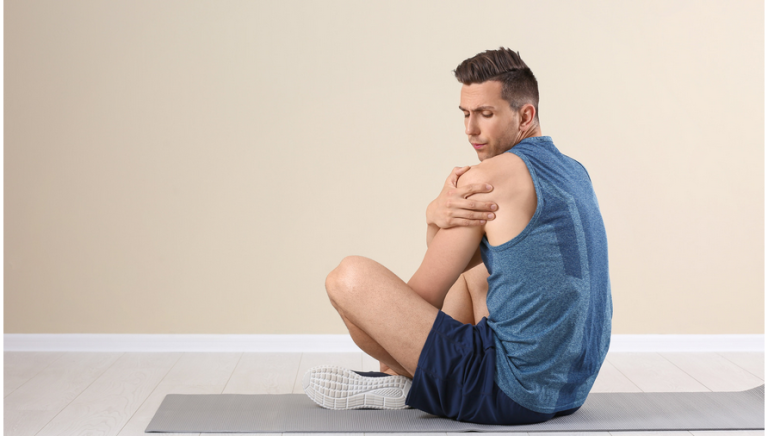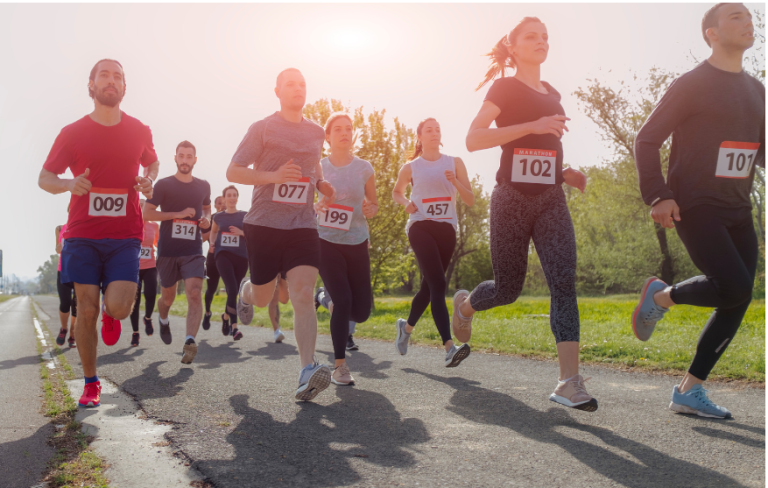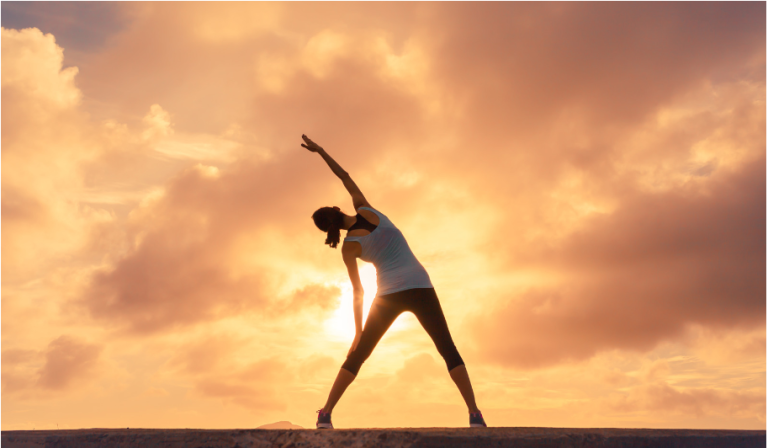
At What Point in Your Stretching Program Are You Likely to Notice Some Improvement?

Embarking on a journey to enhance your flexibility can often feel like navigating through uncharted territory. It’s a path filled with questions, the most pressing of which might be, at what point in your stretching program are you likely to notice some improvement? Unlocking the secrets to improvement in flexibility isn’t just about stretching; it’s about understanding the journey your body undergoes.
Flexibility is not a one-size-fits-all metric; it’s deeply personal and varies widely from person to person. Whether you’re a seasoned athlete looking to optimize performance, someone recovering from an injury, or simply aiming to maintain a healthy range of motion, setting realistic expectations is crucial. Improvement doesn’t happen overnight, but with patience, persistence, and the right approach, it’s within reach.
In this exploration of flexibility, we’ll delve into the essence of stretching programs—highlighting the importance of regularity, technique, and the types of stretching that yield the best results. For those eager to deepen their understanding, our guides on dynamic stretching to improve good flexibility and partner stretching exercises offer invaluable insights. Embark on this journey with us, and discover how to tailor a stretching routine that aligns with your goals, fostering not just improvement, but a lasting transformation in your flexibility.
Understanding the Basics of Stretching
Embarking on a journey to enhance your physical health through stretching is both exciting and enlightening. At its core, a stretching routine is more than just a series of movements; it’s a gateway to improved flexibility, reduced risk of injury to the hamstring and tendon, and an overall sense of well-being. Let’s dive into the essentials of stretching and how it can transform your approach to physical health.
The Role of Stretching in Physical Health
Incorporating a stretching routine into your daily life is akin to laying the foundation for a more resilient and flexible body. The benefits of stretching are vast, ranging from enhanced muscle recovery to improved posture and decreased discomfort. It’s about creating harmony within your body, allowing you to move freely and with ease. Stretching isn’t just a prelude to exercise; it’s a standalone pillar of health that nurtures your body’s flexibility and vitality. By understanding and applying the right stretching techniques, you’re not just moving; you’re evolving toward a more flexible future.
Types of Stretching: Static vs. Dynamic
Navigating through the types of stretching can feel like learning a new language. On one side, we have flashcards containing terms like flexibility to enhance understanding of why flexibility is important. static stretches—the traditional hold-and-stretch technique that focuses on lengthening and relaxing your muscles at their deepest point of tension. It’s about holding a pose and letting the magic happen, perfect for cooling down after a workout or for those moments of peaceful reflection.
On the flip side, dynamic stretching brings movement into the mix, preparing your body for physical activity with active, controlled motions that warm up your muscles. Think of it as setting the stage for your body to perform at its best, whether you’re about to embark on a run or tackle a challenging workout.
For those looking to dive deeper into crafting a personalized stretching routine, our resources on how to stretch psoas while sleeping and full-body stretching routines offer comprehensive guides to get you started. Embrace the journey of stretching, hold each stretch properly, and unlock a world of flexibility and strength that awaits.
Improvement: How Long Does Stretching Take to Work

Embarking on a stretching journey often comes with the question: how long does it take to see improvement from stretching? Understanding the timeline for flexibility gains and recognizing the factors influencing your progress can help set realistic expectations and keep you motivated.
The Timeline for Flexibility Gains
The journey towards greater flexibility is unique for everyone, but a common timeline emerges from consistent practice. Initial improvements may be noticed within the first 2 to 4 weeks of weeks of consistent stretching, as your body begins to adapt to the new demands being placed on it.
These early changes, while perhaps subtle, are important indicators that your efforts are paying off and leading to increased flexibility. For more significant gains, a dedicated effort over 3 to 6 months is typically required. The most profound transformations, however, unfold over 6 to 18 months of regular, committed stretching. This timeline underscores the importance of patience and persistence in your flexibility journey, highlighting that flexibility gains are a long-term investment in your health.
Factors Influencing Your Progress
Several key factors play a role in how quickly you’ll see results from your stretching routine. Regular stretching is fundamental, but how often and how effectively you stretch can greatly impact your progress. Consulting with a body’s physical therapist can provide tailored advice to optimize your routine based on your current level of flexibility, specific goals, and any existing physical conditions.
Remember, flexibility varies from person to person, influenced by genetics, lifestyle, and even the types of stretches performed. Embracing a routine that includes a variety of stretching techniques, and adjusting it as needed based on your body’s response, will help you achieve the best results.
Stretching Techniques for Maximum Efficacy
In our quest for flexibility, understanding the stretching techniques that yield maximum efficacy is crucial. It’s not just about stretching; it’s about stretching right. Let’s explore some key exercises and routines, followed by tips on weaving these practices seamlessly into our daily lives.
Key Stretching Exercises and Routines
When it comes to stretching exercises, variety, and technique are your best friends. A full-body stretching routine can unlock areas of stiffness you didn’t know existed, from the tip of your toes to the top of your head. But where to start? Consider incorporating a mix of hamstring and tendon stretches. stretching techniques that target major muscle groups. Dynamic stretches are excellent for warming up, and preparing your muscles for the day ahead, while static stretches are perfect for cooling down, signaling to your body that it’s time to relax and recover.
For those eager to expand their stretching repertoire, our guides on free stretching programs and partner stretching exercises offer comprehensive insights into routines that can enhance your flexibility journey.
Incorporating Stretching into Your Daily Life
Making daily stretching a habit might seem daunting at first, but it’s all about finding the best time to stretch that aligns with your schedule. Morning stretchers often find that it helps wake up their body, setting a positive tone for the day. If you’re more of a night owl, consider gentle stretching before bed to help ease muscle tension and promote restful sleep.
Remember, the goal is to make stretching a natural part of your day, not a chore. Whether it’s a few minutes of stretching at your desk to counteract the stiffness from sitting or incorporating flexibility exercises into your workout routine, every bit counts. For those looking for a gentle start, explore our guide on gentle stretching techniques to ease into a more flexible lifestyle.
Measuring Your Stretching Progress
In the journey of enhancing our flexibility, measuring progress is both motivating and essential. It’s not just about feeling more limber; it’s about seeing tangible improvements in hamstring health that reflect our dedication and hard work. Let’s dive into some effective tools and tips for tracking flexibility, and understand when it’s time to adjust our stretching routine for optimal results.
Tools and Tips for Tracking Flexibility
Tracking the range of motion is a key indicator of your improvement in flexibility. Simple tools like a flexibility strap or even just a tape measure can help you quantify how far you’ve come. For instance, measuring how close you can reach toward your toes or how deep you can go into a squat can provide concrete data on your full range of motion over time.
Additionally, keeping a stretching diary can be incredibly helpful. Note down how each stretch feels, the level of ease or difficulty you experience, and any increases in stretch duration or flexibility. This not only helps in tracking progress but also in understanding your body’s responses to different stretching techniques.
When to Adjust Your Stretching Routine
Stretching regularly is crucial, but so is listening to your body. If you notice a plateau in progress or, conversely, an increase in discomfort or risk of injury, it’s time to reassess your routine. Stretching can help reduce soreness. improve your flexibility, but only if done correctly and safely. Introducing new stretches, increasing the intensity gradually, or even consulting with a physical therapist for personalized advice can ensure that your stretching routine continues to benefit your body without causing harm.
Remember, flexibility training is a journey with its ups and downs. Regular assessment and adjustment of your routine are key to continuous improvement and injury prevention. Stay patient, stay consistent, and celebrate every small victory along the way.
Overcoming Plateaus and Common Stretching Mistakes
Reaching a plateau in your stretching journey can feel disheartening, almost as if your progress has hit an invisible wall. Similarly, common stretching mistakes can hinder your progress and even pose a risk of injury. But fear not—understanding how to identify and overcome these hurdles is key to continuing your path toward enhanced flexibility and well-being.
Identifying and Overcoming Plateaus
Have you been stretching diligently but not seeing a significant difference or improvements lately? You may have hit a plateau. This is a natural part of any physical training process, including flexibility work. The key to overcoming this standstill is to mix up your routine. Adding variety can challenge your muscles in new ways, making a significant difference in how stretching improves your flexibility. Consider incorporating different types of stretches, adjusting the intensity, or even changing the time of day you stretch. Sometimes, a small tweak in your routine can reignite progress and lead you to new heights of flexibility.
Common Stretching Mistakes to Avoid
While eagerness to improve is commendable, it’s crucial to be mindful of common stretching mistakes to avoid the risk of injury. One major mistake is stretching cold muscles, which can lead to strains. Always ensure a proper warm-up to prepare your muscles for stretching, to prevent tendon soreness. Another mistake is pushing yourself too hard, too fast.
The need to stretch should not translate into forcing your body into painful positions. If you feel any pain during a stretch, ease up immediately. Stretching should challenge your muscles but not cause pain. Listening to your body and respecting its limits is paramount for safe and effective stretching.
FAQs:
Navigating the world of stretching can sometimes feel like piecing together a puzzle. With so many pieces of advice out there, it’s easy to get overwhelmed. Let’s tackle some of your most pressing stretching questions, offering clarity and direction to enhance your flexibility journey.
How often should I stretch to improve flexibility?
To truly improve flexibility, consistency is key. Aim for a stretching routine at least three to five times a week. Remember, more frequent, gentle stretches can be more beneficial than less frequent, intense sessions.
Can stretching alone improve my athletic performance?
Yes and no. While stretching alone might not turn you into an Olympic athlete overnight, it’s a crucial component of a well-rounded training program. Improved flexibility can enhance your range of motion, potentially improving your athletic performance over time.
Is it normal to feel sore after stretching?
A little discomfort is normal, but you shouldn’t feel significant pain. If you’re feeling sore after stretching, it might be a sign you’re pushing too hard. Listen to your body and adjust accordingly.
How do you see results from stretching?
Patience and persistence are your allies here. Results from stretching vary from person to person but sticking with a consistent routine is key to seeing improvements in flexibility and mobility.
How Long Do You Need to Stretch to See Results?
It can vary, but many people start to notice improvements in their tendon flexibility after 3-4 weeks of consistent stretching. The key is regularity and ensuring you’re stretching correctly.
What is the ACSM’s recommendation for stretching exercises?
The American College of Sports Medicine (ACSM) recommends stretching each of the major muscle groups at least two times a week for 60 seconds per exercise.
So, Should You Stretch Before Exercise?
It’s recommended to perform dynamic stretches before exercise to prepare your muscles and increase your range of motion. Save static stretching for after your workout to help with recovery.
Conclusion: Embracing Flexibility as a Lifelong Journey
Embarking on a flexibility journey often prompts the question, “At what point in your stretching program are you likely to notice some improvement?” The answer lies not just in the stretches themselves but in the commitment to making flexibility a lifelong pursuit. As we’ve navigated through various techniques and insights, remember that each stretch brings you closer to realizing the benefits of a more flexible body and mind.
Stay dedicated, be patient, and let every stretch remind you of the progress you’re making toward improved well-being and increased flexibility. Here’s to embracing the journey, one stretch at a time, and discovering the improvements that await.



